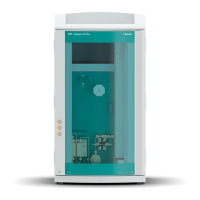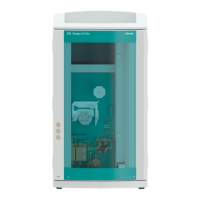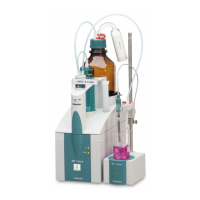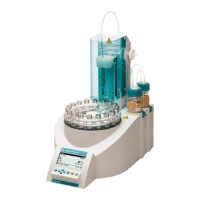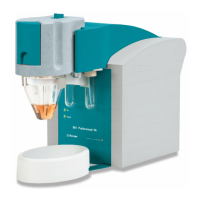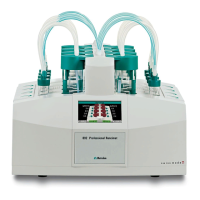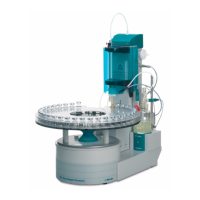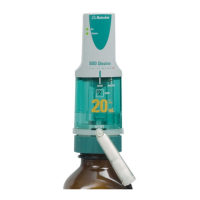4.2 Capillary connections
■■■■■■■■■■■■■■■■■■■■■■
58
■■■■■■■■
883 Basic IC plus
4.2 Capillary connections
All capillary connections between the injection valve, the separation col-
umn and the detector must be as short as possible, have a low dead vol-
ume and be completely leak-tight.
The PEEK capillary downstream of the detector must be free of blockages.
Use only PEEK capillaries with an inner diameter of 0.25 mm between the
high-pressure pump and the detector (high-pressure section).
4.3 Door
CAUTION
Never use the door as a handle.
4.4 Handling the eluent
Careful handling of the eluent ensures stable analysis results. Keep the fol-
lowing general measures in mind when handling the eluent:
■ The supply bottle with the eluent must be connected as indicated in
chapter 3.8, page 23. This is particularly important for eluents with vol-
atile solvents (e.g. acetone).
■ Avoid condensation in the eluent bottle. Drop formation can change
the concentration ratio in the eluent.
■ In the case of very sensitive measurements, we recommend that the
eluent be stirred constantly with a magnetic stirrer (e. g. the
2.801.0010 with 6.2070.000).
■ To protect the IC system from foreign particles, we recommend aspirat-
ing the eluent via an aspiration filter (see chapter 3.8, page 23)
(6.2821.090). This aspiration filter must be replaced as soon as it turns
yellow but at least every 3 months.
4.4.1 Manufacturing eluent
Chemicals used for manufacturing eluents must have a purity grade of at
least "p.a.". They may be diluted only by using ultrapure water (resistance
> 18.2 MΩ*cm). (These specifications apply generally for all reagents used
in ion chromatography.)
Newly manufactured eluents always need to be microfiltered (0.45 µm fil-
ter).
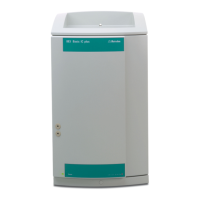
